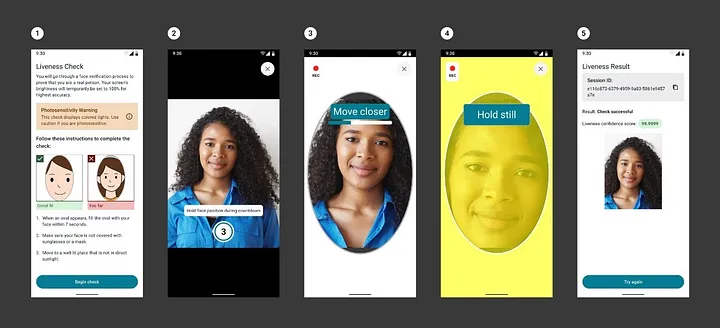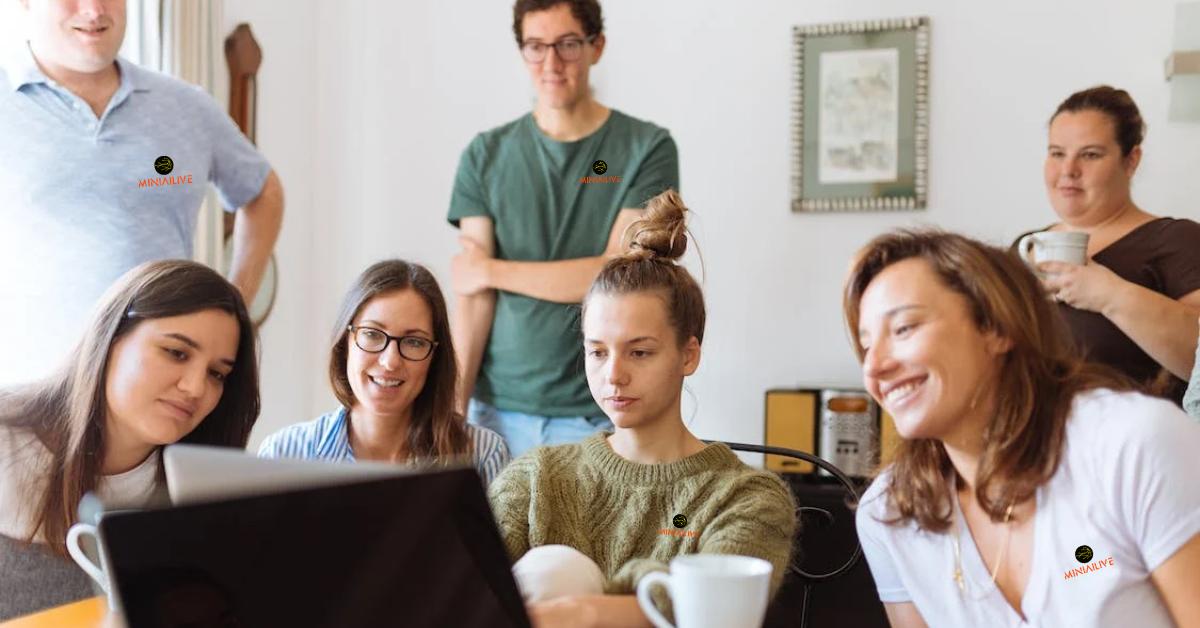In our digital world, robust user verification is very important. From online banking to social platforms to e-commerce, establishing genuine user identities is crucial for security and trust. Traditional user authentication mechanisms based solely on knowledge factors (e.g., passwords) are increasingly vulnerable to credential theft and impersonation attacks. Liveness detection SDK offer a robust defense by incorporating biometric analysis to validate the presence of a living user during the verification process. These SDKs utilize methods like analyzing textures, detecting motion, and reconstructing in 3D to counteract attempts at spoofing.

Technologies Used in Liveness Detection SDKs
| Technology | Description | Role in Liveness Detection |
|---|---|---|
| Computer Vision (CV) | Fundamental image and video processing techniques, including object detection and feature extraction. | Forms the backbone for analyzing visual data, isolating faces, and detecting anomalies. |
| Machine Learning (ML) | Powers the analysis of subtle patterns and cues. Algorithms include CNNs, SVMs, and others. | Trains models to distinguish real faces from fakes, detecting micro-expressions, and analyzing textures. |
| Deep Learning (DL) | Specialized subset of ML using neural networks, often with convolutional layers. | Enables sophisticated analysis, particularly in detecting complex spoofing attempts and deepfakes. |
| 3D Sensing Technologies | May utilize structured light, time-of-flight (ToF) sensors, or stereo cameras. | Create 3D facial models, making it extremely difficult to spoof with flat images or masks. |
| Texture Analysis | Examines micro-textures in skin for subtle patterns unique to living tissue. | Differentiates genuine skin from photos or masks. |
| Motion Analysis | Detects involuntary movements like eye blinking, micro-expressions, or slight head tremors. | Identifies natural cues that are difficult to replicate convincingly. |
| Reflection Analysis | Studies how light reflects off the skin and within the eyes. | Examines reflection patterns to distinguish real faces from fakes. |
| Frequency Domain Analysis | Analyzes image frequencies for subtle artifacts introduced by printouts or display screens. | Helps detect spoofs involving printed photos or displayed videos. |
| Challenge-Response | Requires the user to respond to a prompt or perform specific actions. | Verifies liveness and thwarts static spoofing attempts. |
| Multi-Modal Liveness | Combines multiple modalities (e.g., face, voice, iris) | Enhances accuracy and makes spoofing attacks significantly harder. |
Considerations for Integrating a Liveness Detection SDK
Algorithm Selection
Consider the trade-offs between passive (no user action needed) and active (user performs actions) liveness detection. Prioritize accuracy to reduce false results. For low-powered devices or real-time needs, ensure the algorithm is computationally efficient.
| Factor | Description |
|---|---|
| Passive vs. Active | Passive methods analyze existing data, while active ones require user actions. |
| Accuracy | High accuracy reduces false positives/negatives. |
| Computational Efficiency | Ensure real-time performance, especially on mobiles. |
Security and Privacy
Choose an SDK with robust data encryption (in transit and at rest) to safeguard sensitive biometric information. Comply with regulations like GDPR. Implement strong anti-spoofing measures to prevent fraudulent attempts using photos, videos, or masks.
| Factor | Description |
|---|---|
| Data Encryption | SDK should encrypt biometric data in transit and at rest. |
| Compliance | Adhere to GDPR, regional privacy laws. |
| Spoof Resistance | Strong anti-spoofing (presentation attack detection). |
Integration
The SDK should be compatible with your target platforms (iOS, Android, etc.). A well-designed API simplifies integration, while clear documentation saves development time.
| Factor | Description |
|---|---|
| Platform Compatibility | Ensure support for your target platforms (iOS, Android, Web, etc.). |
| API Design | Well-structured API simplifies workflow integration. |
| Documentation | Clear documentation and support streamline the process. |
User Experience (UX)
Provide clear instructions to guide users through the liveness check process. Offer immediate visual and/or audio feedback on success or failure. Implement helpful error messages to avoid user frustration if the process fails.
| Factor | Description |
|---|---|
| Intuitive Guidance | Clear instructions throughout the process. |
| Feedback | Visual/audio cues on success/failure. |
| Error Handling | Informative error messages aid the user. |
Lighting Conditions
Select an SDK that performs consistently under various lighting conditions (bright, dim, etc.). If lighting will be highly variable, consider algorithms that dynamically adapt to different light levels.
| Factor | Description |
|---|---|
| Robustness | SDK should function well under diverse lighting. |
| Adaptability | Consider algorithms that adjust to light levels. |
Image/Video Quality
Understand the SDK’s minimum requirements for resolution, focus, and clarity. The algorithm might perform poorly on blurry or out-of-focus images, so consider image quality guidelines for users.
| Factor | Description |
|---|---|
| Resolution | Support for minimum required image/video resolutions. |
| Focus & Clarity | Sharp, well-focused images may be needed. |
Performance Monitoring
Track key metrics like success/failure rates and processing times. Analyze this data to identify any potential bottlenecks and inform decisions about SDK updates or optimizations.
| Factor | Description |
|---|---|
| Metrics | Track success rates, failure rates, processing time. |
| Updates | Use performance data to inform SDK updates. |
Cost
Evaluate different licensing models (per-use, subscription) and consider ongoing support costs. Factor in additional hardware requirements (special cameras) and the overall total cost of ownership for a realistic budget.
| Factor | Description |
|---|---|
| Licensing Model | Per-use, subscription, etc. Factor in support costs. |
| Total Cost of Ownership (TCO) | Include hardware needs, maintenance, and updates. |
Advantages of using Liveness Detection SDKs in User Verification Process
| Advantage | Description |
|---|---|
| Enhanced Security | Liveness detection combats presentation attacks (using photos, videos, masks) to impersonate legitimate users, significantly reducing unauthorized access. |
| Improved Fraud Prevention | By verifying a user's presence and liveness, fraudulent activities like account takeover or bot attacks are deterred, protecting user accounts and financial data. |
| Regulatory Compliance | Liveness detection can help adhere to Know Your Customer (KYC) and Anti-Money Laundering (AML) regulations, which mandate strong user verification measures. |
| Frictionless User Experience | Modern liveness detection methods are often seamless and user-friendly, requiring minimal user actions without compromising security. |
| Remote User Verification | Liveness detection enables secure verification even for remote users, eliminating the need for physical presence, expanding reach and accessibility. |
| Scalability and Efficiency | SDKs offer a scalable solution for verifying large user bases efficiently, streamlining the verification process and reducing operational costs. |
| Data-Driven Insights | Performance metrics from liveness detection can provide valuable insights into user behavior and potential security threats, aiding in risk management. |
| Customizable Solutions | SDKs often offer customization options to tailor liveness detection to specific use cases and security requirements. |
| Integration Flexibility | SDKs can be integrated into various applications and platforms, providing flexibility in deployment and use. |
| Continuous Improvement | SDK providers regularly update their algorithms to address evolving threats and maintain high accuracy, ensuring ongoing security effectiveness. |
| Future-Proof Technology | Liveness detection is a future-proof technology as biometric authentication becomes increasingly prevalent, offering a secure and reliable verification method. |
Technical challenges in implementing Liveness Detection SDK
| Challenge | Description | Potential Solutions |
|---|---|---|
| Spoofing Attacks | Attempts to fool the system using photos, videos, or masks designed to look like a real person. | Advanced anti-spoofing algorithms (texture analysis, motion detection) Multi-modal verification (e.g., voice, iris) |
| Variations in Lighting Conditions | Changes in brightness, shadows, and contrast can make it difficult to consistently detect and analyze faces. | Image normalization techniques Training models with diverse lighting conditions |
| Hardware Compatibility | The SDK may not work seamlessly with all devices or camera types, leading to performance issues. | Thorough testing on a range of devices SDKs designed for cross-platform compatibility |
| Computational Cost | Liveness detection algorithms can be resource-intensive, impacting performance on less powerful devices. | Optimization techniques (low-power AI models) Cloud-based processing options |
| User Experience | Requiring complex actions or long verification times can lead to user frustration and abandonment. | Intuitive and streamlined user interfaces Clear instructions and feedback mechanisms |
Future Enhancement in Liveness Detection SDKs for user verification
| Area of Enhancement | Description |
|---|---|
| Resilience Against Attacks | Deepfake detection to combat sophisticated AI-generated impersonations. Advanced analysis of materials and textures to expose elaborate spoofs. |
| Accuracy | Integration of 3D depth-sensing for precise facial mapping. Incorporation of behavioral analysis like micro-expressions and eye movements. |
| User Experience | Shorter, less intrusive liveness checks. Potential for passive liveness detection for seamless experiences. Algorithms adapting to diverse lighting, skin tones, and facial features. |
| Cross-Industry Applications | Secure banking solutions to protect against fraud. Enhanced patient identification and secure remote healthcare access. Improved fraud prevention in government identity verification processes. |
Industries implementing Liveness detection SDKs for user verification
| Industry | Why Liveness Detection? |
|---|---|
| Finance (Banking, Payments) | Protects against account takeover fraud, enhances security in online transactions, and facilitates remote onboarding of customers. |
| Healthcare | Ensures accurate patient identification, prevents medical record mix-ups, secures access to sensitive health information, and enables trusted remote consultations. |
| Government | Reduces fraud in identity verification processes for issuing official documents (passports, licenses), streamlines citizen services, and protects against misuse of benefits programs. |
| E-commerce | Prevents creation of fraudulent accounts, protects against payment fraud, and can enhance age verification for restricted products/services. |
| Sharing Economy Platforms | Verifies the identity of both service providers and users, building trust and safety within the platform, especially for services in sensitive areas like transportation or home rental. |
| Online Education | Ensures the integrity of exams and assessments by verifying the identity of test-takers, preventing cheating and protecting academic credentials. |


One Reply on “How Liveness Detection SDK is Revolutionizing User Verification”